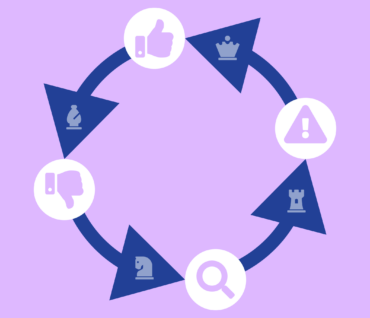
Get Started
Graphite's supplier management tool helps you onboard faster, cut time on risk reviews and streamline supplier validations. Save time and money.
July 6 2023
Foster Trust & Overcome Challenges with Internal Stakeholders
Building positive relationships with internal stakeholders is essential to the success of your procurement team. But what should you do when encountering a stakeholder who’s had negative experiences or seems hesitant to engage?
Conquering Past Negative Experiences
“If stakeholders are closed, to begin with, they’re not going to be open to listening to you,” says David Natoff, founder of Blue Sphere Consulting, a boutique firm focusing on procurement operations. “Asking questions and listening is the greatest thing a procurement category manager can do.”
Ask open-ended questions to understand the past experiences and challenges they’ve encountered with procurement. What are two or three key objectives they need to achieve? And how can procurement help them reach these goals?
Learn everything you can about your stakeholder’s area and then offer advice. But the guidance you provide should focus on your area of expertise—the procurement process—rather than their process, whether marketing, IT, or another location. There should be a mutual understanding that they’re the experts in their field, while your team is an expert in sourcing, contract management, risk mitigation, or whatever you do.
Procurement is a critical function that collaborates closely with various business departments. By actively understanding and empathizing with the pain points and challenges these stakeholders face, your team has a unique opportunity to connect the dots within the organization.
Handling Internal stakeholders with unrealistic expectations
When managing internal partners with unreasonable expectations, taking a strategic approach beyond merely presenting facts is crucial. According to David Hearn, Sr. Director of Global Indirect Procurement, bringing emotional content into your discussions can yield more positive outcomes.
Relying solely on facts often leads to increased resistance. However, immersing yourself in their world, engaging in meaningful conversations, and actively listening can establish a more powerful, collaborative dynamic.
Incorporating emotional elements in stakeholder discussions fosters a more profound connection, promotes empathy, and enables a more productive working relationship. Sharing personal stories, demonstrating empathy, and genuinely listening to their concerns are potent tools for building trust and achieving mutual success.
Giving trade-offs instead of outright rejection
Navigating delicate situations where an internal stakeholder requests something that goes against best practices can be challenging. In these situations, it’s essential to prioritize your organization’s long-term success and well-being. While saying “no” may be necessary, providing a thoughtful explanation is crucial that helps the stakeholder understand the rationale behind your decision. By doing so, you protect them from potentially significant issues that could arise.
Conrad says, “One of my early leaders said to me that he learned early in his career it’s never acceptable to say ‘no.’ It’s more acceptable to give people trade-offs—such as ‘we could do this if we do that.’ Or ‘I’m happy to approve that, but I can’t do it without these other things.’ Or ‘If this is a true business emergency, we should do it. But I need the approval of [this stakeholder], or it’s going to turn up in an internal audit.'”
Stakeholders must perceive you as their ally, working hand in hand to achieve their objectives. Whether streamlining procedures or tackling substantial challenges, your commitment to the partnership should be unwavering. But you must also acknowledge and address any obstacles that arise along the way. By embracing this collaborative mindset, you position procurement as trusted partners, sitting on the same side of the table as stakeholders, dedicated to overcoming hurdles and reaching shared goals.
Ready to Learn More?
Graphite gives procurement teams the tools to enhance performance, increase visibility, and build stakeholder trust.
Request a Demo




